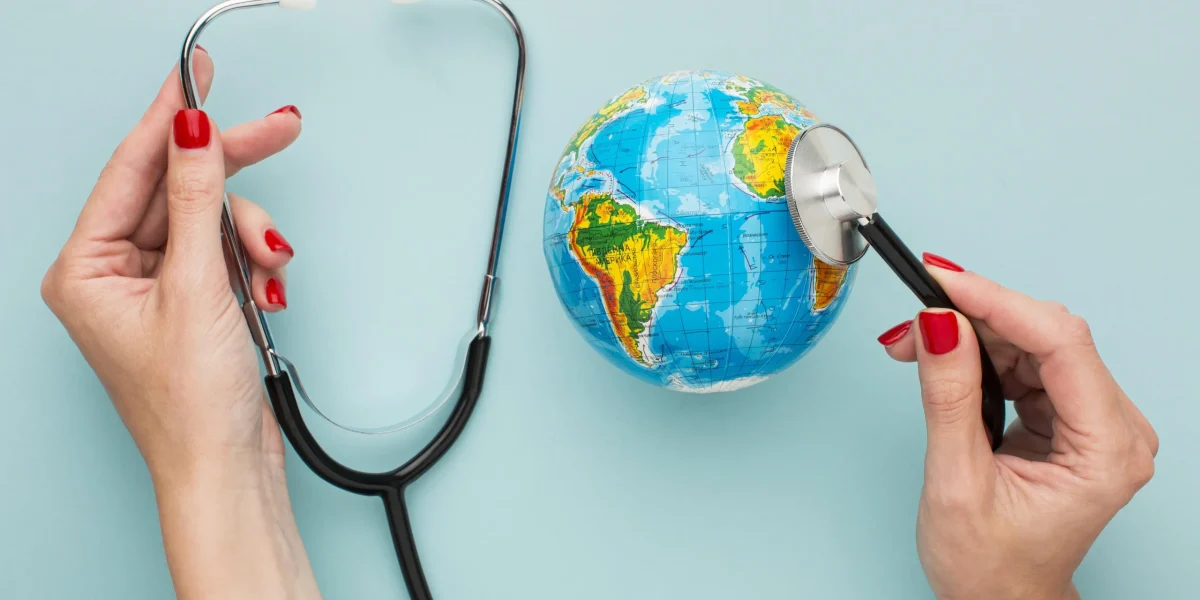Why Medical Translation is Important?
As a healthcare professional, I’ve seen how important medical translation is. It helps keep our patients safe and healthy. Language barriers can stop important information from getting through. That’s why I believe in the power of professional medical translation services.
These services are key in today’s diverse healthcare world. They make sure patients understand their care. Without them, patients might not get the right treatment or take their meds right. I want to make sure everyone can get the care they need, no matter their language.
Key Takeaways
- Professional medical translation services are crucial for ensuring patient safety and improving healthcare outcomes.
- Effective communication between healthcare providers and patients with limited English proficiency is essential for delivering quality care.
- Accurate medical translations help overcome language barriers and promote cultural competency in healthcare settings.
- Leveraging professional interpreters and translators can enhance patient-provider relationships and build trust.
- Investing in medical translation services aligns with regulatory requirements and enhances an organization’s ability to serve diverse communities.
Understanding the Critical Role of Medical Translation in Healthcare
Medical translation is key to quality patient care and safety in healthcare. It helps bridge language gaps, reducing risks of miscommunication. This is crucial for patient outcomes.
Impact on Patient Care and Safety
Accurate medical translations are vital for patients to understand their health. Miscommunication can cause medication errors and improper treatment. Cross-cultural medical terminology must be precise to protect patient health.
Regulatory Requirements and Compliance
Healthcare must meet language access rules for patients with limited English. Not following these can lead to legal and financial issues. Ensuring compliance means all patients get equal care, no matter their language.
Cultural Competency in Healthcare Communication
Medical communication is more than just translation. It involves understanding cultural nuances and patient preferences. Culturally competent translators build trust and improve patient engagement in healthcare decisions.
“Providing language access in healthcare is not just a legal requirement – it’s a moral imperative to ensure equitable and compassionate care for all patients.”
Recognizing medical translation’s importance helps healthcare providers offer safer, more inclusive care. This is crucial for diverse patient populations.
Essential Components of Professional Medical Translation
In healthcare, medical translation services are key. They help break down language barriers. This ensures clear communication among patients, doctors, and health officials.
At the core of these services are a few crucial elements. They make sure the translation work is done well.
One important part is the specialized medical terminology databases used by translators. These databases have a huge list of medical terms and jargon. This helps translators keep their work consistent and accurate in all kinds of healthcare documents.
- Proficiency in medical terminology, anatomy, and disease-specific language
- Understanding of healthcare regulations, protocols, and industry-specific requirements
- Familiarity with medical equipment, procedures, and treatment modalities
Also, professional translators use advanced tools and resources. These tools help improve the quality and speed of their work. They include computer-assisted translation (CAT) tools and quality checks to reduce mistakes.
“Accurate medical translation is not just about converting words, but rather, it is about conveying complex medical concepts and ensuring patient safety.”
With these key components, medical translation services provide top-notch, culturally fitting, and accurate translations. These are crucial for patient care, following health rules, and clear communication in healthcare.
Bridging Language Barriers with Certified Medical Interpreters
In the diverse healthcare landscape, language barriers can significantly impact patient care and safety. Certified medical interpreters play a crucial role in facilitating multilingual patient communication. They are trained to ensure accurate and culturally sensitive interpretation, bridging the gap between healthcare providers and patients.
Qualifications and Certification Requirements
Certified medical interpreters undergo rigorous training and evaluation. They must demonstrate proficiency in medical terminology, cultural competency, and ethical practices. The certification process includes passing written and oral exams, following strict ethical guidelines, and continuous professional development.
By ensuring that medical interpreters meet these high standards, healthcare organizations can deliver quality language services. This prioritizes patient safety and satisfaction.
Remote vs. On-site Interpretation Services
Healthcare facilities can use both remote and on-site interpretation services. Remote interpretation, via video or phone, offers immediate access to certified interpreters. On-site services provide a more personalized and interactive experience.
The choice between these options depends on the healthcare setting’s specific requirements, interpreter availability, and patient preferences.
Technology Integration in Medical Interpreting
The integration of technology has revolutionized medical interpreting. Healthcare providers now have access to various technology-driven solutions. These include mobile apps, video remote interpretation platforms, and AI-powered language translation tools.
These advancements improve interpretation service efficiency and accessibility. They also help healthcare organizations maintain compliance and provide a seamless patient experience.
| Certified Medical Interpreters | Remote Interpretation Services | On-site Interpretation Services |
|---|---|---|
| Highly trained professionals with specialized knowledge in medical terminology and cultural competency | Immediate access to certified interpreters, convenient for healthcare providers | Personalized and interactive experience for patients, fostering stronger patient-provider relationships |
| Adhere to strict ethical guidelines and maintain continuous professional development | Cost-effective solution, reducing the need for on-site interpreter staffing | Stronger connection and understanding between patients and providers |
| Ensure accurate and culturally sensitive interpretation, improving patient care and safety | Utilize video or phone technology for interpretation services | Tailored to the specific needs and preferences of healthcare settings and patients |
Medical Document Localization and Electronic Health Records
In the world of healthcare, talking to people in their own language is more important than ever. This means making medical documents and electronic health records (EHRs) fit for different languages and cultures.
When we translate medical papers, like consent forms and patient guides, we need to know a lot about medical words and the culture of the people we’re talking to. It’s key to make sure the information is right and fits the culture of the language it’s in.
New tech in machine translation for healthcare is helping a lot. It makes translating medical texts fast and accurate. But, we still need certified medical interpreters to check the quality and make sure it’s right for the culture.
The healthcare world is moving towards multilingual electronic health records. The big challenge is to make this tech work smoothly with what we already do. Finding the right mix of tech and human touch is essential for great care for everyone, no matter their language or culture.
With technology and the help of certified experts, we can make sure everyone gets the medical info they need. This is a big step towards better health care for everyone. It helps improve health outcomes and makes sure everyone gets the care they deserve.
Ensuring Quality and Accuracy in Medical Translations
In medical translation, quality and accuracy are key. Healthcare pros need precise translations for top patient care. This means using experts, strict review steps, and special tools.
Working with medical translation experts is crucial. They know medical terms, cultural needs, and rules well. This ensures translations are right and meet patient needs.
Quality checks are vital. This includes many proofreads and edits to catch mistakes. Healthcare interpreting and medical translation teams do this work. They make sure translations are accurate and reliable.
Special tools also help improve translations. Things like medical term databases and translation software. They keep translations consistent, reduce errors, and make the process smoother.
Following these steps helps healthcare groups get accurate medical translations. This supports great patient care and follows rules. Quality and accuracy are key for effective healthcare communication.
The Future of Medical Translation: Trends and Innovations
The healthcare world is changing fast, and medical translation is leading the way. We’re seeing new machine translation for healthcare and multilingual patient communication tools. These changes promise to make talking across languages easier for everyone.
Artificial intelligence (AI) and machine learning (ML) are big players in this future. They can make translating medical texts faster and more accurate. This means doctors and patients can talk clearly, no matter their language.
| Emerging Trends | Potential Impact |
|---|---|
| Artificial Intelligence and Machine Learning | Improved efficiency and accuracy in medical translations |
| Advancements in Real-Time Interpretation | Enhanced patient-provider interactions and reduced communication barriers |
| Integrating Multilingual Communication Platforms | Seamless collaboration and information sharing across global healthcare networks |
Real-time interpretation is another big leap. It lets doctors talk directly with patients in their own language. This makes care more personal and effective.
As healthcare gets more global, talking in many languages becomes key. New platforms will help make sure everyone gets the care they need, no matter their language.
Conclusion
In the fast-changing world of healthcare, professional medical translation is key. It ensures clear communication, patient safety, and the best health outcomes. We’ve seen how important it is to translate medical documents and electronic health records well.
It’s also vital to have certified medical interpreters. They help break down language barriers and improve cultural understanding in healthcare.
By focusing on medical translation, healthcare providers help patients from different language backgrounds. This lets them fully take part in their care. It also makes treatment plans clearer and promotes a fair healthcare experience for everyone.
Adding healthcare interpreting services, both in-person and online, makes the patient-doctor relationship stronger. It ensures important information is shared accurately and clearly.
As more people need language access in healthcare, it’s crucial for healthcare groups to keep up. They should use the latest technologies and best methods to give top-notch, culturally-aware care to all patients.
By using the power of professional medical translation, the healthcare world can move forward. It can make sure language doesn’t get in the way of health and happiness for everyone.
FAQ
What are the key benefits of professional medical translation services for healthcare providers?
Professional medical translation services are vital for patient safety and better healthcare outcomes. They ensure clear communication between healthcare providers and patients who speak limited English. Accurate translations also help meet regulatory needs, improve cultural understanding, and overcome language barriers for better patient care.
What are the essential components of professional medical translation?
Professional medical translation needs deep knowledge of medical terms and the use of advanced tools. This ensures translations are accurate, consistent, and culturally fitting. It covers everything from patient forms to electronic health records and consent documents.
How do certified medical interpreters contribute to bridging language barriers in healthcare?
Certified medical interpreters are key in helping healthcare providers talk to patients who don’t speak much English. They get special training and certification. This ensures they can share medical info accurately and help with patient care, whether in person or remotely.
What are the key considerations in localizing medical documents and electronic health records for multilingual use?
Localizing medical documents and electronic health records for different languages needs a deep understanding of medical terms. It also requires adapting content and layout to fit various cultures. This often involves using special translation tools and working closely with healthcare providers and translation experts.
How can healthcare organizations ensure the quality and accuracy of their medical translations?
Ensuring the quality and accuracy of medical translations is key for patient safety and healthcare success. Best practices include using experts, strict review processes, and specialized tools. Regular checks and ongoing improvement are also vital to keep translations accurate.
What are some of the latest trends and innovations in medical translation?
The field of medical translation is changing fast, with new tech like artificial intelligence and machine learning becoming more important. Healthcare groups are looking into real-time interpretation and machine translation to improve communication with patients. But they also know the importance of human oversight to ensure accuracy and reliability.

